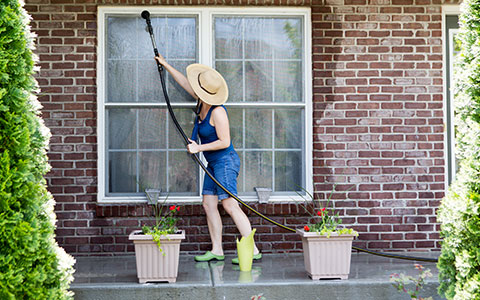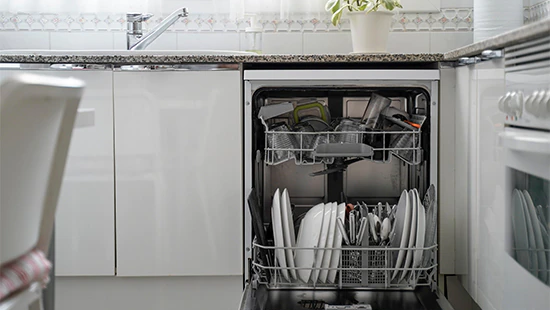How Water-Connected Appliances and Systems Can Lead to Water Damage in Your Home

Home water hazards: find the leak
As a homeowner, you have a lot to think about when it comes to taking care of your home. But one thing you may not have considered is how water-connected appliances and systems can lead to water damage. Learn how to proactively defend against potential water issues. Just a few simple tasks can help you come home happy.
9 home areas to keep an eye on for water issues:
1. Refrigerator water supply line
Look for kinks, cracks, and other signs of wear and tear in the water supply line. If you move your refrigerator to inspect the supply line, be careful not to damage or kink the line when you put it back into place.
2. Water heater
Corrosion on the external pipe on the tank could be a sign of internal problems. Look for crystal-like deposits that may be white, blue, or green. And remember, water heaters don’t last forever. Check the manufacturer’s warranty for guidance about the lifespan of your water heater.
3. Main water shut-off valve
In the event of a sudden water leak, the main shut-off valve can stop the flow of water to your home and help mitigate resulting damage. Take a minute to locate your main water valve before there’s an issue, and flag it with tape or a tag to help people spot it.
4. Sink fittings and connections
If you notice a drip or signs of a leak or other potential plumbing problems, immediately call a professional. To be alerted early to signs of a leak, install a smart water sensor under your sink.
5. Caulking around your tub/shower
Caulking used to seal the perimeter of a tub or shower can fail over time. Look for cracks, missing caulking or other signs of wear and tear. Regularly check sealants to ensure they are properly sealing against unwanted water intrusion.
6. Inside your toilet tank
Look for corrosion, degradation or discoloration. Some cleaning products that can be added to the tank can prematurely degrade the components. Regularly check the components in your toilet tank. If they show signs of wear and tear, replace them.
7. Washing machine supply lines
Supply lines are made of rubber or braided stainless steel. A cracked line could not just lead to damage to the room where the leak occurred, but also to the floor below. Turn off water supply, whether your washer is on an upper floor or in the basement, when you’re not running the machine.
8. Sump pump
To test your sump pump to see if it’s functioning properly, pour water into the sump (pit) to make sure the pump kicks on. The float inside the sump will begin to rise with the water and activate the pump, an indication that it’s working.
9. Central air conditioning unit drain pan
Extreme temperatures in an attic can cause plastic drain pans to crack and leak. An overflow sensor switch in the pan will shut off the air conditioning system if the pan is full. A leaking pan or malfunctioning sensor can lead to a bigger issue. Check the drain pan and test the overflow sensor switch regularly.
While you’re taking steps to help protect your home from a non-weather water disaster, it’s also a good time to make sure you’ve got the appropriate insurance coverage. Contact your local independent agent to review and update your homeowners insurance coverage.



